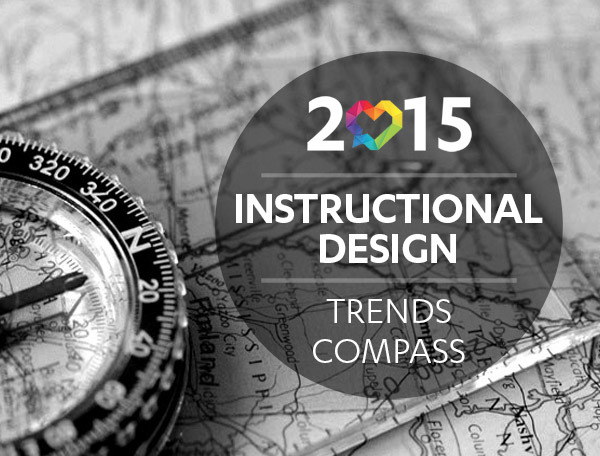When One Hat Isn't Enough For IDs
When people hear the title "Instructional Designer," they often picture someone who simply writes content for training. But anyone who's ever worked on a Learning and Development (L&D) solution knows the truth: Instructional Designers (IDs) wear a lot of hats.
From scriptwriter to developer, QA reviewer to LMS admin, and sometimes even voice-over artist, Instructional Designers juggle a mix of creative, technical, and strategic responsibilities. It's no wonder they're often referred to as the Swiss Army knife of the L&D world. But here's the million-dollar question:
Is it always better to rely on one multiskilled person—or are projects more successful when roles are divided among specialists?
Let's break it down.
All The Hats IDs Might Wear
To truly appreciate the versatility of a strong Instructional Designer, just take a look at the roles they often play in a project:
- Script and storyboard writer
IDs craft the learning journey, writing clear, engaging scripts and storyboards that outline onscreen content, narration, activities, and assessments. - eLearning developer
Using tools, they bring courses to life with interactivity and visual design. - Voice talent
In smaller teams, the ID might record temporary or even final narration. - Quality assurance (QA)
IDs test their own work, or others', for accuracy, accessibility, and technical bugs. - LMS administrator
They may upload, test, and troubleshoot courses within your Learning Management System (LMS) - User testing facilitator
IDs coordinate pilot testing and analyze feedback from real users. - Needs analysis conductor
IDs often start by identifying performance gaps, business goals, and audience needs. - Subject Matter Expert (SME)
Sometimes, the ID is the SME—especially when repurposing internal documents or compliance content. - Project manager and communicator
They juggle timelines, stakeholder meetings, and team collaboration.
It's impressive—and sometimes overwhelming. So, is this all-in-one model actually beneficial for your project?
When One Instructional Designer Is Enough
For smaller projects, hiring a versatile ID who can manage multiple roles is efficient and cost-effective. If the course is straightforward—say, a 30-minute compliance module with a tight timeline—a skilled Instructional Designer can wear all the hats and get it done quickly.
Benefits include:
- Streamlined communication (only one person to coordinate with)
- Faster turnaround time
- Lower overall cost
- Consistent voice and style throughout the project
Best for:
Short modules, internal audiences, simple updates, or pilot programs with limited budgets.
When Specialized Roles Make The Difference
However, for complex Learning and Development solutions, dividing the workload among specialists can dramatically improve the end result. Let's say your project includes scenario-based video, custom animations, assessments, and multilingual support. Asking one person to handle it all might lead to burnout, delays, or subpar quality in areas outside their expertise.
Bringing in specialists like graphic designers, QA testers, voice-over pros, or even a separate project manager allows each team member to focus on what they do best—and that translates into:
- Higher quality visuals, narration, and interactivity.
- Better alignment with business performance metrics.
- More thorough QA, reducing the chance of errors.
- A stronger, more polished final product.
Best for:
Leadership development programs, product training, compliance courses for external audiences, or any project where ROI and engagement are key.
Tips For Deciding Which Approach Is Right For You
So how do you decide whether to hire one Instructional Designer or assemble a full project team? Here are a few tips:
1. Define The Project Scope And Complexity
If your training involves multiple modules, custom branding, video, and assessments tied to business goals, you'll likely need more than one expert.
2. Consider Your Timeline And Internal Bandwidth
Short deadline and no internal reviewers? A team of specialists can work in parallel. For a slower-paced internal rollout, a solo ID may be just right.
3. Think About Performance Outcomes
The more strategic the training, the more important it is to measure success through performance metrics. High-stakes projects often justify a larger team to ensure learning effectiveness.
4. Don't Underestimate QA And User Testing
Even great courses need thorough testing. If you don't have internal capacity for review, consider bringing in a dedicated QA tester or pilot coordinator.
5. Talk To Your Vendor Or Consultant
They may offer tiered packages or recommend hybrid models—like pairing a lead ID with support roles for development and QA.
The Bottom Line: The Right Talent = Less Stress + Better Results
At the end of the day, there's no one-size-fits-all answer. Some of the best Learning and Development solutions come from a single talented Instructional Designer, while others benefit greatly from a collaborative team of specialists. If you're aiming for higher learner engagement, stronger retention, and measurable performance improvements, consider the skillsets needed to get you there—and whether they all live in one person or need to be spread across a team. Because when the right people are in the right roles? That's when your training project becomes a true success story.










